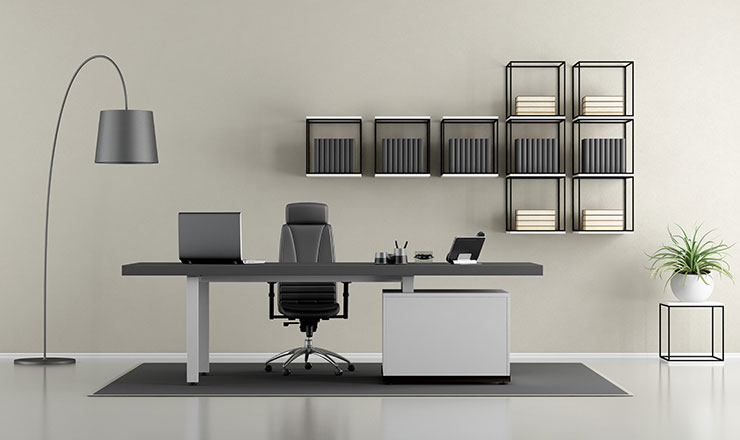How to Set Up a Tool Crib for Manufacturers

Take Control of Your Assets
A personalized demo is just one click away.
Tool crib management refers to the fine art of ensuring that you have the right tools on hand at the right time for the job. Sounds easy enough, but for manufacturers, it's not. Organizations are trying their best to adhere to production schedules and deadlines. An organization's success depends partly on its work before production starts.
Tool crib management is more than just knowing where your tools are; it's also about properly maintaining and calibrating your tools and equipment.
How do tool crib management and calibration fit together?
Calibration "is the act of comparing a device under test (DUT) of an unknown value with a reference standard of a known value." It's a test to check that the tools you have are accurate and fit to use. Tool calibration is an exercise that companies should conduct on an ongoing basis, at regular intervals, particularly for those tools that are in frequent use. Wear and tear has a direct effect on the accuracy and performance of your tools.
Not only does accurate calibration extend the lifespan of your tools and equipment, but it can save manufacturers money and time by reducing or even eliminating the downtime associated with poorly functioning tools. Users can also make decisions based on facts, not guesswork, which presents additional opportunities for cost savings.
Most importantly, calibration helps manufacturers meet regulatory requirements and protect worker and/or end-user safety. Consider this example mentioned in an article written by Edward Simpson for Processing magazine ("Improving efficiency with instrument calibration"; Sept. 30, 2016): "In pharmaceutical manufacturing, any change in the quality of the products can directly affect the health and lives of the users. This makes instrument calibration an absolute necessity." Clearly, the stakes for accuracy can be very high.
How often should you calibrate your equipment and tools as part of your tool crib management program?
According to PASS Ltd., you should "Test equipment should be calibrated every year. Regardless of the type of tester, how often it has been used that year, or other factors, calibration is essential. A tester's operation can be affected by so many different factors; whether it's an electrical surge damaging components, or moisture intrusion after it's been left in a cupboard, the accuracy of your tester can easily be compromised over the year."
Step-by-step tool crib management setup:
Step 1: Assign roles & responsibilities for effective tool crib management
Before establishing or improving your tool crib management program, you must first identify the roles and responsibilities of the individuals responsible for implementing it. These include:
- Tool crib manager
- Supervisor
- Worker/Operator
Each role has specific tasks that each role must carry out for the tool crib management process to run smoothly. Let's take a closer look at each one.
The tool crib manager
The person responsible for overall tool crib operations, this individual develops and oversees policies and procedures related to the acquisition, storage, use, and disposal of tools.
The manager is also responsible for ensuring that all tools are calibrated and maintained as required by law and company policy. Sometimes, a tool crib manager may also be responsible for ordering and purchasing tools. A worker/operator may serve in this role when s/he oversees all aspects of tool crib management on an ongoing basis.
On the other hand, if more than one person is involved in managing your tools and storage areas or facilities—which can include equipment rooms, machine shops, warehouses, stockrooms, and even temporary setups that are put together whenever needed—you will want to identify someone as having overall responsibility for ensuring compliance with standards related to calibration frequency and accuracy levels. That person would then report directly to senior managers about these issues regularly (weekly or monthly).
The supervisor
This individual serves as a liaison between departments and the tool crib manager, ensuring that all workers understand and comply with company policies related to the calibration and use of tools.
Tool supervisors also monitor the work area for any unsafe conditions that could jeopardize worker safety. Sometimes, a supervisor may be responsible for ordering and stocking inventory in the tool crib.
The worker/operator
This person is responsible for using calibrated tools correctly and safely in accordance with company procedures. They must also ensure that tools are properly stored when not in use.
Workers should be trained on calibration frequency and how to use calibrated tools effectively before they are allowed to utilize them on the production floor or in other areas where they could potentially impact product quality.
Step 2: Set tool storage guidelines & security
Once you have identified the roles and responsibilities of those responsible for tool crib management, it's time to establish guidelines to ensure tools are used effectively. These might include:
- Storing tools in designated areas or zones within each storage location
- Labeling all equipment with unique identification numbers that correspond to calibration records on file
- Ensuring no one other than authorized employees have access to the area where calibrated tools are stored
Additionally, your company should develop procedures for minimizing risks related to theft or misuse by setting rules regarding who is allowed into these locations when they are not under supervision. For example, workers assigned as "gatekeepers" could be required to check IDs and verify supervisors' approval before allowing anyone into the tool crib area.
Step 3: Create clear tool crib rules
The next step in implementing a tool crib management system is to create detailed policies and procedures that employees can reference if they have questions or concerns. In addition, all workers should be required to read and sign off on these rules before being allowed to store tools within the company's designated areas.
By clearly defining your expectations for how tools will be used and secured, you will minimize the chances that your company's tools will go missing or become damaged due to neglect during an asset audit.
For example, a policy might require written approval from one's direct supervisor before using calibrated equipment on any production project. An individual would then submit an incident log detailing how they used this tool in accordance with all calibration standards set by the company.
Without such procedures in place, it is easy for employees to claim ignorance when mistakes are made—even if those errors were entirely preventable had specific guidelines been followed more closely.
Step 4: Have an organized tool crib database
Finally, you should use a tool crib management system that requires workers to record inventory in an organized format. This will make it much easier for supervisors and managers to identify when tools are missing or need replacement—ensuring your company always has the proper equipment on hand at all times.
In the past, this might be done using Excel spreadsheets, pen and paper, or other simple data collection programs. Today, an asset management platform can empower your business to track your tool crib database remotely and automatically without complicated and time-intensive spreadsheet management. With a mobile asset management system, all your tool crib data is stored in one place— and automatically updated globally whenever a change is made from one device.
By automatically tracking individual items from their point of purchase to their return upon being replaced by newer tools, you can minimize errors related to lost supplies and ensure a more organized workplace where employees have access to precisely what they need whenever they require it.
Step 5: Automate with tool crib management software
Looking at the rest of your tool crib management efforts, automation is the most effective way to track all the moving parts. A reliable and flexible asset tracking platform allows manufacturers to house all their tool- and equipment-related data in one easy-to-access location.
They can set up custom user settings based on role, access, or other criteria. When a user needs a particular tool, they simply need to log into the system to determine the location and availability of the item. Check-in and check-out features make gathering that information and reserving the asset easy.
But you may want tool crib management as part of an asset tracking platform to help automate ordering when supplies hit a particular threshold, helping manufacturers avoid over- and/or under-stocking scenarios.
Check out Asset Panda’s tool inventory crib software
Asset Panda offers manufacturers an end-to-end tracking solution that simplifies tool crib management with an all-in-one mobile app. Loaded with customizable features and easy-to-use features, Asset Panda delivers clients a cost-effective approach to protecting their investments.
Ready to try it for yourself? Get a free demo today (no card required). And you'll receive full access to user guides, video tutorials, free mobile apps, and call-in and live chat support from our friendly Asset Panda support team.
Take Control of Your Assets
A personalized demo is just one click away.
Related News & Press

Learn more from an Asset Panda expert
Get a FREE consultation with an asset tracking expert to find out how you can transform your asset tracking.
Contact our Sales Team at (888) 928-6112


